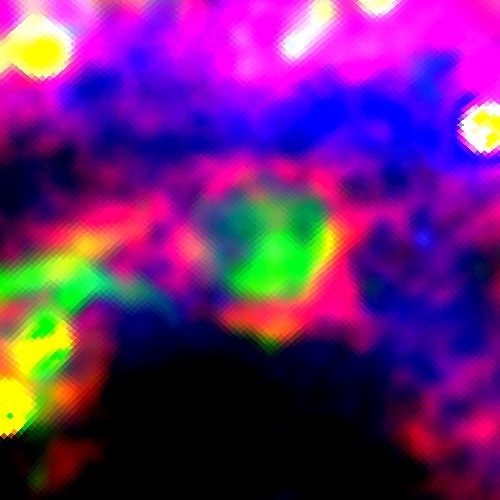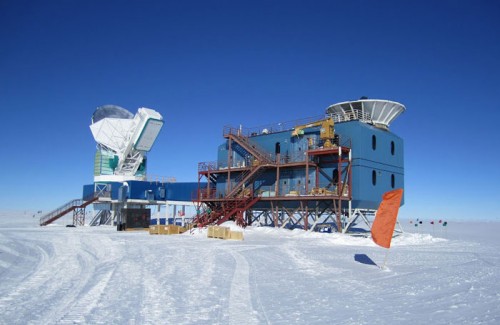Tag archives: cosmic microwave background
3D cosmic-microwave background, iPhone paper and Dance Your PhD winner
By Michael Banks
It might look like a kind of dumpling at first sight, but upon closer inspection the eagle eyed might spot that it is actually a 3D version of the cosmic microwave background (CMB) – the thermal remnant of the Big Bang that came into being when the universe was only 380 000 years old. The model was created by physicist Dave Clements from Imperial College London who says that detailed maps of the CMB – created by space telescopes such as the European Space Agency’s Planck satellite – are difficult to view in 2D. (more…)
View all posts by this author | View this author's profile
George Smoot on mapping the universe with gravity

Measuring the universe: George Smoot enthuses about gravitational waves.
By Hamish Johnston at the Lindau Nobel Laureate Meeting in Germany
Yesterday I was in a fantastic session with George Smoot, who shared the 2006 Nobel Prize for Physics for discovering the anisotropy in the cosmic microwave background. He will be speaking today at the 66th Lindau Nobel Laureate Meeting about another important astronomical discovery, the first direct detection of gravitational waves that was made by LIGO in September 2015. Waves that were created by the merger of two unexpectedly large black holes.
The January 2016 issue of Physics World is now out

Polarized patterns: the cosmic microwave background as you’ve never seen it before. (Courtesy: Planck Collaboration)
By Matin Durrani
Happy new year and welcome back to Physics World after the Christmas break.
It’s always great to get a new year off to good start, so why not tuck into the first issue of Physics World magazine of 2016, which is now out online and through the Physics World app.
Our cover feature this month lets you find out all about the Planck mission’s new map of the cosmic microwave background. Written by members of the Planck collaboration, the feature explains how it provides information on not just the intensity of the radiation, but also by how much – and in which direction – it’s polarized.
View all posts by this author | View this author's profile
Is dark energy becoming marginalized?
By Tushna Commissariat

Supernovae secrets: Chandra image of G299, a type Ia supernova remnant. (Courtesy: NASA/CXC/U Texas)
Here at Physics World, we enjoy a good debate and late last week, a paper appeared on the arXiv server that is bound to kick up quite the storm, once it has been peer-reviewed and published. Titled “Marginal evidence for cosmic acceleration from type Ia supernovae”, the paper was written by Subir Sarkar of the Particle Theory Group at the University of Oxford and the Niels Bohr Institute in Copenhagen, together with colleagues Alberto Guffanti and Jeppe Trøst Nielsen. It suggests that the cosmic expansion may not be occurring at an accelerating rate after all, contrary to the findings of previous Nobel prize-winning work and most of our current standard cosmological models, including that of dark energy.
Indeed, the researchers’ work suggests that the evidence for acceleration is nowhere near as strong as previously suggested – it is closer to 3σ rather than 5σ, and allows for expansion at a constant velocity. Nielsen et al. have come to this conclusion after studying a much larger database of type Ia supernovae – 50 of which were studied in the original work, while this study looks at 740 – that are used as “standard candles” to detect cosmic acceleration.
This study is sure to make many cosmologists sit up and take notice, and an interesting discussion is sure to follow. So watch this space and check back in with us, once the paper is published and we catch up with Sarkar and his colleagues.
BICEP2’s findings trigger new kind of ‘inflation’

Sunrise over the BICEP2 experiment at the South Pole. (Courtesy: National Science Foundation)
By Tushna Commissariat
Scientists and laypeople the world over were intrigued by the announcement made by the BICEP2 collaboration earlier last month, when it claimed to have detected the primordial “B-mode polarization” of the cosmic microwave signal (CMB). Many researchers have hailed it as the first evidence for cosmic inflation – the extremely rapid expansion that cosmologists believe our universe underwent a mere 10–35 s after the Big Bang.
Indeed, after a quick search of the arXiv preprint server, I found nearly 172 papers based on the BICEP2 data that have been written since the team’s announcement on 17 March. Some 200 individual citations to the original BICEP2 paper can also be found on the server.
3D printing food, ‘Top 10’ lists, teenage nuclear physicists and more
By Tushna Commissariat
Over the past few years, 3D printing has captured the imagination and interest of scientists and the public alike. Now, a €3 million EU-funded project known as “PERFORMANCE – PERsonalised FOod using Rapid MAnufacturing for the Nutrition of elderly ConsumErs” is adapting 3D printing technology to food in order to create easily digestible sustenance that is not only nutritious but also looks and tastes like the real thing. The proposed printer would work like its conventional inkjet counterpart – except the cartridges would be filled with liquefied food instead of ink! While that may not sound like the most appetising way of eating your five-a-day, it might come as a relief for those who suffer from a condition known as “dysphagia” that makes swallowing food difficult. You can read more about the proposed scheme on the EU’s Horizon magazine website and take a look at the video above.
View all posts by this author | View this author's profile
Silence the ping: astronomers urge 24-hour microwave-oven ban
By Ken Heartly-Wright

(Shutterstock/Andris Torms)
An international group of astronomers is calling for people to stop using their microwave ovens for 24 hours next April to give scientists a better chance of finding gravitational waves.
The ubiquitous kitchen gadgets broadcast copious amounts of electromagnetic radiation at frequencies around 2.45 GHz – exactly that of the cosmic microwave background, which bears the signature of gravitational waves from the early universe.
The call for a one-day global microwave oven ban comes just a fortnight after scientists detected B-mode polarization from the early universe using the BICEP2 telescope at the South Pole.
BICEP2 surprise visit, a bizarre rant, credible science fiction and more
By Hamish Johnston
The big story this week is that astronomers working on the BICEP2 telescope may have spotted the first direct evidence for cosmic inflation. This is very good news for the physicist Andrei Linde, who along with Alan Guth and others did much of the early work on inflation. In the above YouTube video Linde, who is certainly in the running for a Nobel prize, receives a surprise visit from BICEP2 team member Chao-Lin Kuo. Kuo is the first to tell Linde and his wife, the physicist Renata Kallosh, the news that the theory that Linde developed more than 30 years earlier had finally been backed up by direct observational evidence. Not surprisingly, champagne glasses are clinking!
Here at physicsworld.com we have tried to tell both sides of the story: the thrill of seeing the first hints of cosmic inflation, tempered with calls for caution that more data are needed before inflation is victorious over other theories describing the early universe.
View all posts by this author | View this author's profile
Could a canned UK-led telescope have discovered B-modes before BICEP2?

Researchers working on the BICEP2 telescope announced on Monday that they had detected the first evidence for the primordial B-mode polarization of the cosmic microwave background. (Courtesy: National Science Foundation)
By Michael Banks
This week has seen physics news hit the mainstream in a way not seen since the Higgs boson was discovered at the CERN particle-physics lab in 2012.
On Monday, researchers working on the Background Imaging of Cosmic Extragalactic Polarization (BICEP2) telescope at the South Pole revealed that they have detected the first evidence for the primordial B-mode polarization of the cosmic microwave background (CMB). You can read our news stories about the finding here and here.
Yet could scientists in the UK have got there first if a telescope they had been planning to build – dubbed Clover – hadn’t been axed in 2009?
View all posts by this author | View this author's profile